#Machine Learning Courses
Explore tagged Tumblr posts
Text
Machine Learning Courses – Unlock the Power of AI and Data Science

Machine learning courses provide a deep dive into algorithms, predictive modeling, and neural networks. From supervised and unsupervised learning to deep learning frameworks like TensorFlow, structured training accelerates expertise. Professionals gain the ability to develop AI-driven solutions for industries like healthcare, finance, and automation. Businesses leveraging machine learning gain competitive advantages through automation, data insights, and innovation.
0 notes
Text

Looking for a reliable platform to kickstart or advance your tech career? This infographic highlights the key reasons why Nearlearn is a trusted name in the EdTech industry. From industry-focused courses and expert trainers to hands-on learning, flexible formats, and strong placement support — Nearlearn is helping learners transform their careers with confidence.
Whether you're a student, a working professional, or someone looking to switch fields, Nearlearn offers a learning path tailored just for you.
Explore the core features that make Nearlearn a go-to destination for AI, Machine Learning, Python, and other in-demand tech skills.
Checkout the nearlearn website:https://nearlearn.com/courses/ai-and-machine-learning/machine-learning-with-python-training
#Nearlearn#EdTech#Online Learning#Machine Learning Courses#Artificial Intelligence Training#Data Science#Career Growth#Python Training#eLearning Platforms#Infographics#Upskill
0 notes
Text
Descriptive Statistics: The Starting Point for Machine Learning - Mean, Median & Mode
Introduction
Did you know that the simple concepts of mean, median, and mode that most students learn in high school or college are part of something much bigger called descriptive statistics? These are not just formulas to memorize for exams, but powerful tools that help us make sense of the world, especially in the realm of machine learning.
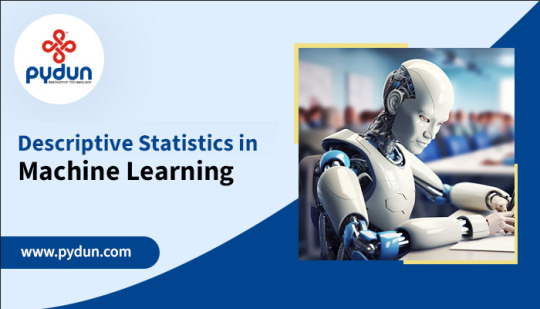
If you’ve ever used a weather app, checked the average price of a product, or wondered how your exam scores compare to others, you’ve already encountered descriptive statistics in action. These concepts are the foundation of data analysis, helping us summarize large amounts of information into digestible insights. Whether you're an academic, a data scientist, or just someone working with numbers, understanding these can be incredibly beneficial.
In this blog, we’ll explore mean, median, and mode in simple, relatable terms. You’ll learn why they matter, how they’re used, and how they can even reveal surprising patterns in data. By the end, you’ll see these tools as more than just numbers—they’re a way to understand and tell stories with data.
What Are Descriptive Statistics?
Descriptive statistics are like a summary of a book. Imagine you have a giant dataset filled with numbers. Instead of analyzing every single number individually, descriptive statistics let you condense all that information into a few key takeaways.
Think of descriptive statistics as the answers to these questions:
What is the typical value in the data?
How spread out are the numbers?
Are there any unusual numbers (outliers) in the dataset?
These tools don’t just organize data; they help us make decisions. For example, a sports coach might use descriptive statistics to figure out an average player’s performance, or a teacher might use it to understand how a class performed on a test.
Key Terms
Mean (Average): Represents the typical value of your dataset.
Median (Middle Value): The middle number in a sorted dataset.
Mode (Most Frequent Value): The value that appears most often.
These concepts sound simple, but their real-world applications are profound. Let’s dive deeper into each one.
Mean: The Average Value
The mean is the first thing people think of when summarizing data. It’s the average—a single number that represents the entire dataset.
How to Calculate the Mean
To find the mean:
Add up all the numbers in the dataset.
Divide by the total number of values.
Real-World Example
Imagine your test scores over five exams are: 80, 85, 90, 75, and 95. To calculate the mean:
Add: 80 + 85 + 90 + 75 + 95 = 425
Divide: 425 ÷ 5 = 85
The mean score is 85. This tells you that, on average, you scored 85 on your tests.
Why the Mean Is Useful
The mean helps you understand the “typical” value of a dataset. If you’re a teacher, the mean class score can tell you how well students performed overall. If you’re a business owner, the mean monthly sales can help you track growth.
Limitations of the Mean
The mean can be misleading when there are outliers. Outliers are values that are much higher or lower than the rest of the data.
Example of Outliers: Imagine your test scores are: 80, 85, 90, 75, and 300. The mean becomes:
Add: 80 + 85 + 90 + 75 + 300 = 630
Divide: 630 ÷ 5 = 126
Does 126 represent your performance? Not really! That one outlier (300) skews the mean, making it higher than most of your scores.
Median: The Middle Value
The median is the middle number in a dataset when it’s sorted in order. Unlike the mean, the median isn’t affected by outliers, making it a more accurate representation of data in certain cases.
How to Calculate the Median
Arrange the data in ascending order.
Find the middle value.
If there’s an odd number of values, the median is the middle one.
If there’s an even number of values, the median is the average of the two middle numbers.
Real-World Example
Your daily spending over a week: 30, 40, 45, 50, 100.
Arrange: 30, 40, 45, 50, 100
Median = 45 (middle value)
If an outlier changes your spending to 30, 40, 45, 50, 1000, the median stays at 45. This stability makes the median useful when dealing with skewed data.
Why the Median Is Useful
The median is great for datasets with extreme values or skewed distributions, such as house prices. For example, if most houses in a neighbourhood cost $200,000 but one mansion costs $10 million, the median price gives a clearer picture of the typical home instead of the anomalies. If a family is planning to buy a house and they look at the mean, and it is very high they probably would not want to buy the house that’s where median comes into play. Median gives a clearer picture of the normal prices instead of the outliers.
Mode: The Most Frequent Value
The mode is the value that appears most often in a dataset. It’s especially useful for categorical data or finding trends.
How to Find the Mode
Count how many times each value appears.
The value with the highest count is the mode.
Real-World Example
Survey responses about favourite ice cream flavours: Vanilla, Chocolate, Chocolate, Strawberry, Vanilla, Chocolate.
Vanilla - 2
Strawberry - 1
Chocolate - 3
Mode = Chocolate (appears 3 times).
Why the Mode Is Useful
The mode helps identify popularity or commonality. For instance, in marketing, knowing the most purchased product can guide inventory decisions, like which product do we stock up on.
Summary Each Concept
Mean: Calculate by adding all numbers and dividing by the count. Useful for getting the "average" but can be skewed by outliers.
Median: Found by arranging data and picking the middle value. Excellent for skewed data because it's not influenced by outliers.
Mode: Identified by finding the most frequent data point. Great for understanding commonality or popularity in categorical data.
Conclusion
Descriptive statistics aren’t just numbers; they’re tools that help us make sense of data and the world around us. By understanding mean, median, mode, variance, and standard deviation, you can:
Summarize data quickly.
Identify patterns and outliers.
Prepare data for deeper analysis in machine learning.
So, the next time you see a dataset, don’t just glance over it—ask yourself: What story is this data telling? With descriptive statistics, you have the power to find out.
Insights with Descriptive Statistics
Through mean, median, and mode, descriptive statistics allow us to quickly summarize data, identify patterns, and prepare for more complex analyses. These concepts aren't just tools for calculation; they offer us ways to view and interpret the vast amounts of data that inform decisions in fields ranging from education to economics.
You might be wondering why I've mentioned Variance and Standard Deviation towards the end. This is because these concepts are fundamental in descriptive statistics and are vital for machine learning and data analysis. Variance and Standard Deviation provide us with insights into the spread and variability of data, aspects that mean, median, and mode cannot capture alone.
If you feel you're falling behind in any of these areas or have a keen interest in learning machine learning, now is the time to act. Pydun Technology’s specialized training programs are designed to equip you with the skills and confidence to overcome obstacles and master complex concepts.
At Pydun, we believe the journey isn’t just about hard work—it’s about simplifying complexity, understanding the core principles, and connecting these concepts to real-world applications.
Are you ready to transform your academic and professional journey? Contact us today at [email protected] or drop us a message at +91 93619 99189 and take the first step toward becoming the learner you were destined to be.
Stay tuned for the next blog where we will delve deeper into how Variance and Standard Deviation play a crucial role in understanding data spread and variability. This knowledge not only enhances our ability to summarize data but also helps in predicting and controlling future outcomes in complex data environments.
#Machine Learning#Machine Learning with AI#AI courese#Artificial Intelligence and Machine Learning Courses#Artificial Intelligence Courses#Machine Learning Courses#AI Courses in Madurai#AI and ML Training in Madurai#AI Programming in Madurai#Machine Learning Training in Madurai#Data Science and Analytics with AI#Data Science and Analytics with AI Courses
1 note
·
View note
Text
Exploring Machine Learning Courses at Brainy n Bright
Machine learning is one of the most sought-after fields in technology today, and Brainy n Bright offers an exceptional opportunity for learners to dive into this transformative area. Their comprehensive courses are designed for both beginners and advanced learners, combining theoretical knowledge with practical, hands-on projects.

At Brainy n Bright, students get the chance to explore machine learning through engaging mini-projects, capstone assignments, and internships. The curriculum integrates emerging technologies like Artificial Intelligence of Things (AIoT), giving students a unique edge. Whether you’re aiming for a career in data science, AI, or robotics, their expert instructors and flexible learning options ensure that you acquire real-world skills.
If you're looking to kick-start or advance your career in machine learning courses, Brainy n Bright is a perfect place to begin your journey. Start today and transform your passion for technology into expertise!
1 note
·
View note
Text

A Complete Guide to Machine Learning Certification Courses Online
Elevate your career with our comprehensive online Machine Learning Certification Courses. Master cutting-edge techniques, from supervised and unsupervised learning to deep learning and neural networks. Gain hands-on experience and industry-recognized certification.
#machine learning online course#ai and ml courses in india#Machine Learning Certification Courses Online#Machine Learning Courses
0 notes
Text
How AI and Machine Learning Are Transforming Cybersecurity

In today's rapidly evolving digital landscape, the integration of Artificial Intelligence (AI) and Machine Learning (ML) is revolutionizing cybersecurity. These technologies enable organizations to enhance their threat detection capabilities, automate incident response, and improve malware and phishing prevention strategies.
By analyzing vast amounts of data for patterns and anomalies, AI and ML provide proactive defenses against sophisticated cyber threats. As the demand for skilled cybersecurity professionals proficient in these technologies rises, online machine learning courses offer valuable training opportunities. Embracing AI and ML not only empowers individuals to advance their careers but also positions organizations at the forefront of the cybersecurity revolution.
#Machine Learning course online#Machine learning courses#Machine Learning course free#Machine Learning course certificate#Online machine learning course#Online machine learning course with certificate#Machine Learning course for beginners
0 notes
Text
Stunning Machine Learning Engineer Salary: Unlock Now

Global Salary Insights: Aitech.Studio provides insights into machine learning engineer salaries across the globe, highlighting top countries like Switzerland, the U.S., and Australia with competitive salary ranges.
Salary Ranges: The average machine learning engineer salary in the United States falls between $96,146 and $114,777, with mid-career professionals earning around $105,183 annually.
Industry Variations: Salaries vary based on industries, with sectors like real estate, retail, healthcare, and human resources offering lucrative opportunities for machine learning engineers.
Career Growth Potential: The field of machine learning engineering offers promising career growth opportunities, with mid-career professionals typically earning around $143,641 annually and experienced engineers reaching up to $150,708 per year.
Demand and Job Openings: Machine learning engineers are in high demand across various industries like healthcare, finance, retail, and manufacturing, with over 16,000 job openings in the U.S. alone.
Geographical Impact: Geographical location significantly influences machine learning engineer salaries, with countries like Switzerland offering an average of $131,860 and the U.S. averaging $127,301 annually.
Training Opportunities: Aitech.Studio offers training courses to equip individuals with the necessary skills and expertise to excel in the field of machine learning engineering, providing a pathway to lucrative career opportunities
#machine learning enganeer#machine learning#mlops#machine learning salarys#machine learning solutions#machine learning courses
0 notes
Text
Unlocking Opportunities with AI ML Courses Online by Rudra's Online
In today's digital era, the demand for professionals skilled in Artificial Intelligence (AI) and Machine Learning (ML) is on the rise. As businesses across various industries embrace AI and ML technologies to drive innovation and efficiency, the need for individuals with expertise in these fields has never been greater. Rudra's Online, a leading platform for online education, offers a comprehensive range of AI and ML courses to help individuals stay ahead in this rapidly evolving field.
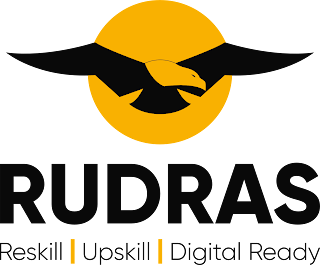
Rudra's Online's AI ML Courses Online are designed to equip students and professionals with the knowledge and skills needed to succeed in the world of artificial intelligence and machine learning. Whether you are a beginner looking to explore the basics of AI and ML or an experienced professional seeking to enhance your expertise, Rudra's Online has a course tailored to meet your needs.
One of the key benefits of taking AI ML Courses Online from Rudra's Online is the flexibility and convenience they offer. With online courses, students can learn at their own pace and from anywhere in the world, making it easier to balance learning with other commitments. Additionally, Rudra's Online's courses are taught by industry experts with real-world experience in AI and ML, ensuring that students receive practical, up-to-date knowledge.
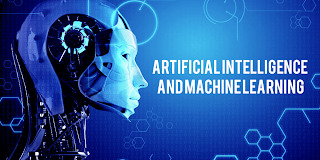
By enrolling in AI ML Courses Online from Rudra's Online, individuals can gain a competitive edge in today's job market and open up new career opportunities in fields such as data science, artificial intelligence, and machine learning. Whether you are looking to switch careers or advance in your current role, investing in AI ML Courses Online from Rudra's Online can be a valuable step towards achieving your professional goals.
In conclusion, Rudra's Online offers high-quality AI ML Courses Online that are designed to equip students and professionals with the skills and knowledge needed to succeed in the field of artificial intelligence and machine learning. By enrolling in these courses, individuals can enhance their expertise, stay ahead of the curve, and unlock exciting career opportunities in this fast-growing industry.
#AI ML courses online#AI ML courses#artificial intelligence courses#machine learning courses#rudrasonline
0 notes
Text
The Beginner's Guide to Machine Learning Training: Everything You Need to Know
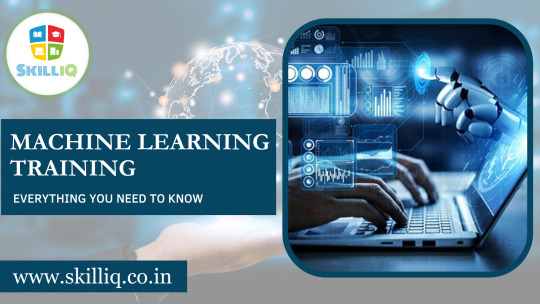
Welcome to the exciting world of machine learning! Whether you're a curious beginner or someone looking to dive into the realm of artificial intelligence, understanding the basics of machine learning training is a crucial first step. In this beginner's guide, we'll break down the essentials to help you navigate the complex landscape of machine learning.
Understanding Machine Learning: Machine learning is a subset of artificial intelligence that enables computers to learn and make predictions or decisions without explicit programming. At its core, machine learning involves the use of algorithms and statistical models that allow systems to improve their performance over time.
Types of Machine Learning: There are three main types of machine learning: supervised learning, unsupervised learning, and reinforcement learning. Supervised learning involves training a model on a labeled dataset, unsupervised learning deals with unlabeled data, and reinforcement learning focuses on training models through a system of rewards and punishments.
The Training Process: Machine learning models "learn" through a training process where they are exposed to data, make predictions, and adjust their parameters to minimize errors. This iterative process continues until the model achieves the desired level of accuracy.
Data is King: The quality of the data you feed into your machine learning model is paramount. Clean, relevant, and representative datasets are essential for training accurate models. Preprocessing steps such as cleaning, normalization, and feature engineering play a crucial role in shaping the success of your model.
Choosing the Right Algorithm: Different machine learning algorithms serve various purposes. Choosing the right algorithm depends on the nature of your problem—whether it's a classification, regression, clustering, or other tasks. Popular algorithms include linear regression, decision trees, support vector machines, and neural networks.
Validation and Testing: To ensure the generalization ability of your model, it's essential to split your dataset into training, validation, and testing sets. Training data is used to teach the model, the validation set helps fine-tune parameters, and the testing set evaluates the model's performance on new, unseen data.
Model Evaluation Metrics: Determining the success of your model involves using appropriate evaluation metrics. Accuracy, precision, recall, F1 score, and area under the ROC curve are common metrics used to assess model performance, depending on the type of problem you are solving.
Conclusion:
Embarking on the journey of machine learning training is an exhilarating venture. Equipped with a solid foundation in the fundamentals, you are now better prepared to delve into the expansive realm of artificial intelligence. Enter SkillIQ's Machine Learning Training – your dedicated pathway to mastering the art of AI. Specifically designed for beginners and those aspiring to become adept data scientists, this course encompasses the essential elements of machine learning.
#artificial intelligence course in ahmedabad#artificial intelligence institute in india#machine learning course#machine learning certification#machine learning courses#machine learning training#ml course#machine learning syllabus#machine learning certification course
0 notes
Text
DataMites is global training institute for machine learning and related courses. DataMites provides both online and offline classes. Join today to become ml engineer
0 notes
Text
Transcript:
Gabriel: A lot of people say that me and the Machine are gay lovers.
But what they don’t know is that the Machine is heavily homophobic.
It actually hates gay people and killed my pet drone in limbo.
V1: That was a misunderstanding. I support L- Support L-
Gabriel: What?
V1: I support LGBTQ.
Gabriel: LIAR.
Well if it’s so true, how come it had such a hard time saying it?
Audio source
#ultrakill#gabriel ultrakill#when the machine says something so angelphobic you gotta hit them with the virtue beam#v1 really said of course you have blue wings and pronouns#machine maybe you should spend some of your points on learning how to pronounce things#instead of buying more $20 skins for your guns
533 notes
·
View notes
Text
Master the Machines: Learn Machine Learning with Ascendient Learning
Why Machine Learning Skills Are in High Demand
Machine learning is at the core of nearly every innovation in technology today. From personalized product recommendations and fraud detection to predictive maintenance and self-driving cars, businesses rely on machine learning to gain insights, optimize performance, and make smarter decisions. As organizations generate more data than ever before, the demand for professionals who can design, train, and deploy machine learning models is rising rapidly across industries.
Ascendient Learning: The Smartest Path to ML Expertise
Ascendient Learning is a trusted provider of machine learning training, offering courses developed in partnership with top vendors like AWS, IBM, Microsoft, Google Cloud, NVIDIA, and Databricks. With access to official courseware, experienced instructors, and flexible learning formats, Ascendient equips individuals and teams with the skills needed to turn data into action.
Courses are available in live virtual classrooms, in-person sessions, and self-paced formats. Learners benefit from hands-on labs, real-world case studies, and post-class support that reinforces what they’ve learned. Whether you’re a data scientist, software engineer, analyst, or IT manager, Ascendient has a training path that fits your role and future goals.
Training That Matches Real-World Applications
Ascendient Learning’s machine learning curriculum spans from foundational concepts to advanced implementation techniques. Beginners can start with introductory courses like Machine Learning on Google Cloud, Introduction to AI and ML, or Practical Data Science and Machine Learning with Python. These courses provide a strong base in algorithms, supervised and unsupervised learning, and model evaluation.
For more advanced learners, courses such as Advanced Machine Learning, Generative AI Engineering with Databricks, and Machine Learning with Apache Spark offer in-depth training on building scalable ML solutions and integrating them into cloud environments. Students can explore technologies like TensorFlow, Scikit-learn, PyTorch, and tools such as Amazon SageMaker and IBM Watson Studio.
Gain Skills That Translate into Real Impact
Machine learning isn’t just a buzzword. It's transforming the way organizations work. With the right training, professionals can improve business forecasting, automate time-consuming processes, and uncover patterns that would be impossible to detect manually.
In sectors like healthcare, ML helps identify treatment risks and recommend care paths. In retail, it powers dynamic pricing and customer segmentation. In manufacturing, it predicts equipment failure before it happens. Professionals who can harness machine learning contribute directly to innovation, efficiency, and growth.
Certification Paths That Build Career Momentum
Ascendient Learning’s machine learning training is also aligned with certification goals from AWS, IBM, Google Cloud, and Microsoft. Certifications such as AWS Certified Machine Learning – Specialty, Microsoft Azure AI Engineer Associate, and Google Cloud Certified – Professional ML Engineer validate your skills and demonstrate your readiness to lead AI initiatives.
Certified professionals often enjoy increased job opportunities, higher salaries, and greater credibility within their organizations. Ascendient supports this journey by offering prep materials, expert guidance, and access to labs even after the course ends.
Machine Learning with Ascendient
Machine learning is shaping the future of work, and those with the skills to understand and apply it will lead the change. Ascendient Learning offers a clear, flexible, and expert-led path to help you develop those skills, earn certifications, and make an impact in your career and organization.
Explore Ascendient Learning’s machine learning course catalog today. Discover the training that can turn your curiosity into capability and your ideas into innovation.
For more information visit: https://www.ascendientlearning.com/it-training/topics/ai-and-machine-learning
0 notes
Text
The genAI hate is funny to me bc yall don't actually hate generative AI, you hate the way it's being used.
You know how spellcheck sucks now? And it's because they're doing all this genAI bullshit! If they just kept AI out of spellcheck it would be FINE!!!
Except here's the thing: old spellcheck was genAI too, it was just well built. When you got a new phone, you'd have to "train" it to stop correcting fuck to duck by hitting the x or deleting the correction and writing your beautiful swear all over again. The fact that it eventually stopped fixing your swears is because it was a piece of machine learning software that learned your texting and word choice patterns. That's generative AI, babey! The difference between that and what we have now is that the old system had rules built into it. It had a solid foundation of grammar and capitalization and when to expect a word in a sentence.
Well built generative AI is actually fine and dandy and useful, just like predictive AI. The problem is, as always, capitalism enshittifying everything.
#to be clear I hate chatgpt#i hate c.ai#i hate ai art#this is not a pro ai post this is a pro understanding post#this is brought to you by my younger sib who is currently taking machine learning courses and tells me all about them
30 notes
·
View notes
Text
Aryabhata and the Birth of Zero: A Legacy That Powers Modern AI and Machine Learning
Introduction
The concept of zero is often taken for granted in our modern world. It seems simple and ubiquitous, a basic number that underpins the technology we rely on daily. But the origins of zero trace back to a brilliant mind in ancient India - the mathematician and astronomer Aryabhata. His invention of zero was not just a mathematical innovation; it laid the foundation for the technological advances that shape our world today. From computer science to artificial intelligence (AI) and machine learning (ML), the legacy of Aryabhata’s work continues to drive us forward.
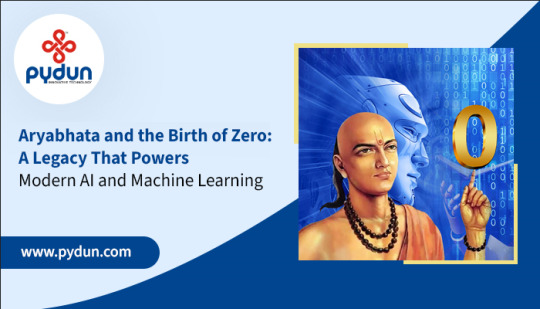
Aryabhata: The Visionary Mathematician and Astronomer
Aryabhata was an extraordinary thinker who lived in the 5th century during the Gupta period in India, a time of great intellectual and scientific advancements. His most profound contribution was the conceptualization of zero as a place-value placeholder in the decimal system, an idea that changed the way we perform arithmetic and set the stage for future mathematical developments. While his works spanned a range of subjects, from trigonometry to astronomy, it was his treatment of zero that had the most far-reaching implications.
Before Aryabhata, the idea of zero didn’t exist in the way we understand it today. While ancient civilizations, such as the Babylonians, had symbols for nothingness, Aryabhata took this concept further and formalized it in a way that allowed for the development of complex mathematical systems. This shift in thinking made it possible to perform calculations with ease and precision, including the ability to represent large numbers, and led directly to the development of algebra, calculus, and eventually the mathematical models behind modern-day computing.
The Evolution of Zero: From Ancient India to Modern Technology
Though Aryabhata’s invention of zero was ground breaking, its global acceptance took time. As the concept spread across the world through the Islamic Golden Age and eventually reached Europe, it became an integral part of mathematics. Today, zero is the cornerstone of the binary number system, the basis of all modern computing.
In the world of technology, zero plays a pivotal role in the way digital systems operate. The binary code that powers our computers and devices is composed of two digits: 1 and 0. These on/off states are what enable computers to perform complex calculations and store vast amounts of information. Every piece of technology - from the simplest calculator to the most advanced AI systems — relies on the concept of zero to function efficiently.
Zero’s Connection to Modern AI and Machine Learning
As AI and machine learning (ML) continue to revolutionize industries, it's fascinating to reflect on how these advanced technologies are rooted in the mathematical principles that Aryabhata pioneered. Machine learning, at its core, is about processing data, making predictions, and optimizing results — all of which require complex mathematical algorithms. Zero plays a key role in these processes, from initializing algorithms to managing the flow of data.
In machine learning, for instance, the process of training a model often involves adjusting parameters using optimization techniques like gradient descent. Zero, or values close to it, are crucial in determining how algorithms "learn" and adjust over time. In neural networks, another major component of modern AI, zero functions as a critical part of error correction and network tuning. These algorithms adjust their weights by calculating the difference between predicted and actual outcomes, sometimes approaching zero to refine the model for better accuracy.
The very ability to represent data, process it, and make intelligent decisions is based on complex mathematical models that wouldn't exist without the foundational role of zero. As AI technology continues to evolve, it's exciting to think about the endless possibilities and innovations that can emerge, all thanks to the humble yet powerful concept of zero.
How Pydun Technology is Shaping the Future of AI and ML
As the world of AI and machine learning continues to grow, the demand for skilled professionals is higher than ever. This is where Pydun Technology Private Limited comes in. As a leading provider of AI and ML training, Pydun Technology is committed to empowering individuals and businesses with the knowledge and skills they need to succeed in this rapidly evolving field.
At Pydun, learning is not just about theory; it’s about practical application. With a comprehensive curriculum designed to cover everything from the basics of machine learning to advanced AI techniques, Pydun Technology ensures that students are well-equipped to tackle the challenges of the modern tech landscape. Whether you're a beginner or an experienced professional, Pydun offers tailored training programs that meet you where you are and help you progress to the next level.
The world of AI and ML can seem intimidating, but with the right guidance and training, anyone can master it. Pydun Technology offers hands-on learning experiences, real-world projects, and expert instruction to help you understand the complex algorithms and mathematical concepts that power AI systems - including the essential role of zero. By learning from industry experts, you’ll gain the confidence and skills to contribute meaningfully to the rapidly expanding world of AI and ML.
Why Choose Pydun Technology?
Expert Instructors: Pydun’s team of instructors brings years of industry experience to the table, providing valuable insights into the practical applications of AI and ML.
Comprehensive Curriculum: Pydun offers a detailed, structured curriculum that takes learners from foundational concepts to advanced techniques, ensuring that every student is prepared to excel in the field.
Hands-On Learning: At Pydun, learning is interactive. Students work on real-world projects, solving problems that mirror those faced by companies in the industry.
Personalized Training: Pydun offers customized training programs, catering to both individual learners and corporate teams, ensuring that everyone gets the attention and resources they need to succeed.
Future-Ready Skills: With the rapid advancements in AI and ML, the skills you gain at Pydun will keep you ahead of the curve, enabling you to tap into exciting opportunities in one of the most dynamic fields today.
Conclusion
The legacy of Aryabhata and his invention of zero continues to shape the world of technology today. Zero is the silent enabler of all digital systems, from binary code to artificial intelligence, and it is this very concept that has allowed AI and ML to flourish in the modern era.
If you're ready to step into the future and unlock the potential of AI and ML, Pydun Technology Private Limited is here to guide you. With expert-led training, hands-on experience, and a focus on practical learning, Pydun ensures that you are equipped with the skills and knowledge needed to succeed in this exciting field. Embrace the future today and take the first step towards mastering AI and ML with Pydun Technology - where learning meets innovation.
#best programming course training in madurai#Artificial Intelligence and Machine Learning Courses#Artificial Intelligence Courses#Machine Learning Courses#AI Courses in Madurai#AI and ML Training in Madurai#AI Programming in Madurai#Machine Learning Training in Madurai#internship#best IT training in madurai
1 note
·
View note
Text
Learn Machine Learning with Brainy N Bright

At Brainy n Bright, we offer tailored machine learning courses that equip you with the skills to build intelligent systems and tackle complex problems. Learn from industry professionals, work on hands-on projects, and gain practical knowledge of algorithms, data processing, and AI applications. Whether you're beginning your tech journey or enhancing your expertise, our courses provide the foundation for success in the fast-evolving field of machine learning.
Sign up today and start transforming your career!
0 notes
Note
hi I’m back again to ask about the down in the deep au
How’s Danny handling the whole deaged/transformation into sea Creature/melding/not having his full power set? Also how is he feeling about his new guardian figure(?)
Does he miss his human feet
Are you in my google docs lol?
He actually is more than a hint hysterical when he first realizes his legs are gone. And doesn't realize how 'small' he is at first or that he doesn't have his powers thanks to the fact he was already exhausted and such from his Wail and previous battle. Needless to say he does kind of panic when he realized that the few powers he has are limited AF.
He's actually kind of neutral towards Sebastian at first, but does end up warming up towards him. Er, it takes a tiny bit at first because he holds a grudge for carrying him everywhere, he's sure this place can't be more dangerous than other places he's been!

He's actually struggling with not having legs, seeing as the only time he's had a ghost tail, or any tail really, up until this point is in flight. And it didn't have a fin, so he's incredibly clumsy. (There are many swimming lessons in his future to help him get used to legless movement, along with a bit of hand-holding to his embarrassment)
So all in all, he could be handling it worse at the moment. Could be handling it better, but he could be handling it worse too.
#ask answered#down in the deep au#my art#pressure crossover#danny phantom crossover#roblox pressure#danny phantom#sebastian solace#danny fenton#de aged danny#Course this can change as I write more and the story develops but currently angst is more background#Yes Sebastian is having flashbacks to his own post-transformation just learning how to move time frames#As to why he's carrying Danny a lot- Danny even when he learns to move is still pretty slow & the Blacksite is Dangerous#Plus he doesn't want cameras or expendables to catch sight of him so staying near the scrambler it is#Which for those not aware is what the machine strapped to Sebastian's back is#But seriously if anyone wants another wip or drabble lemme know lol
141 notes
·
View notes